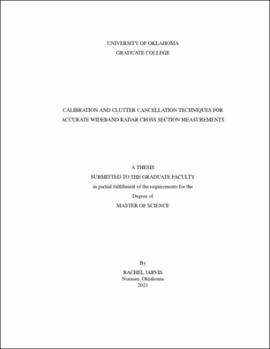| dc.description.abstract | The expected received power is a key design parameter when designing a radar system. The radar’s receiver must be sensitive enough to detect the object of interest without being saturated by the highest received power. The object of interest’s visibility to the radar is determined by its radar cross section (RCS), which is a function of the object’s size, shape, material, and orientation as well as the polarization and frequency of the incident wave. Even for simple objects like spheres, calculating the RCS is cumbersome, and there are only closed-form solutions for a few geometries. Of the existing analytical solutions, almost all assume that the incident wavelength is much larger than the object. Simulations can be used to find RCS, but the computational
requirements quickly increase with the object’s size and complexity. The best method to determine the RCS of large, complex objects or any object over a wide bandwidth is measurement. There are many challenges that must be overcome to obtain accurate RCS measurements, especially when the RCS is measured over a wide bandwidth. Traditionally, these measurements are collected with two co-located antennas connected to a vector network analyzer. The signal received from the OUT is very small due to free-space path loss and cable loss, while the mutual coupling between the antennas and reflections from other clutter can be significant.
At the University of Oklahoma’s Advanced Radar Research Center, a single measurement configuration is designed and tested to measure the RCS of a 6-inch sphere with less than 5% average error from 2-18 GHz. This accuracy is achieved through strategic hardware selection, careful calibration, and clutter suppression algorithms in post-processing. Stepped Frequency Continuous Wave (SFCW) radar principles are applied to design the clutter suppression techniques, including vector background subtraction and time-gating. After verifying the validity of the measurement results with spheres, the techniques are applied to the measurement of distributed targets. Multiple spheres and an OU Skywalker unmanned aerial vehicle (UAV) are measured across angle with vertical and horizontal wave polarizations. The measurement frequency capabilities are then expanded by using single
antenna reflection coefficient results to extract the RCS. This single-antenna configuration introduces new obstacles that are overcome to achieve an average error of less than 12.5% from 300-1000 MHz. With a few hardware alterations, the measurement
bandwidth could be expanded even further to characterize the RCS values of interest more extensively. | en_US |

